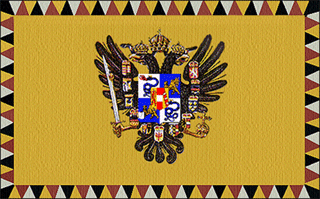 One question, which I have never heard asked or mentioned, is whether or not the flag of the Kingdom of Lombardo-Venetia is rightfully a heritage symbol, or a symbol of Austrian/Hapsburg oppression? Although called a "kingdom," it was in fact the Hapsburg kingdom that was being referenced there. This is a flag that is used by some as a heritage symbol today.
One question, which I have never heard asked or mentioned, is whether or not the flag of the Kingdom of Lombardo-Venetia is rightfully a heritage symbol, or a symbol of Austrian/Hapsburg oppression? Although called a "kingdom," it was in fact the Hapsburg kingdom that was being referenced there. This is a flag that is used by some as a heritage symbol today.The Lombardian-Venetian link may be confused a little bit with the fact that Eastern Lombardy is tied into the history of the Venetian Republic. Some see it as more "West Veneto" than "East Lombardy," but that is with a smaller minority of people.
Lombardia and the Veneto were two distinct nations at one point, until both were conquered by the powerful Austrian army. They even had their boots planted firmly on Trentino until less than a century ago. The revolts of 1848, while only initially successful, did lead to the eventual breaking with Austrian rule. During this difficult time of subjugation, the Lombarians and Venetians, which were already tied together historically, were tied together even closer. I don't know who designed this flag, but it does have both Lombardian and Venetian symbology on it, not Austrian.
This was about hanging tough during Hapsburg oppression. To me, this is the issue here. I'm realistic, the Venetians did some pushing of their own historically. In many ways, the Council of Ten had been much like the Hapsburg Dynasty. In my opinion, this flag IS a heritage symbol. It's not an Austrian flag. The crest has the symbols of both San Marco and the Visconti family on it. This can also be viewed as an era where both the ruling class and the general population were in the same boat. I know that, historically speaking, similar situations may be different, with puppet politicians of the colonized region selling out their nation and people. I don't get that sense here at all. I believe that this flag is a symbol of Lombardo-Venetian heritage, steadfastness, and eventual liberation.
 [Left: The alternative flag for the Lombardo-Venetian Kingdom]
[Left: The alternative flag for the Lombardo-Venetian Kingdom]I think that we should accept this flag, however, what is called the "alternative flag" is very suspect. The symbol of the double-headed eagle was used by a number of nations, but mainly Germanic and Slavic I think. I don't really know if this was the official Austrian flag for this colony or not. There could have been two flags for the same region. One in an official capacity, and one as an internal regional flag, with perhaps a hint of rebel in it. Maybe somebody out there can help us out here?
This time period wasn't what one would call brutal, like a barbaric subjugation. It was, as far as what I have been able to gather, very unpleasant. There were forced marriages of women to Austrian soldiers, for example. In addition, there seems to just generally have been quite a bit of undue liberties leniency granted to Austrian soldiers as far as the law was concerned. That could be interpreted in different ways, so I will just leave it at that for now.
Lastly, I believe that the Lombardian Carbonari and the Venetian Carbonari were primarily interested in resisting the Austrians and achieving autonomy at the least, and less with joining an Italian multi-ethnic state. I think that sovereignty was their eventual goal.
Note [12-28-08]: It should be noted that there is an Austrian symbol in the middle of the crest, above the Lombardian and Venetian symbols. Therefore, in order for this to be thought of as a heritage symbol, that would need to be removed. The main point was that some well-intentioned people have used this as a heritage flag, without any challenge on these points.

The Lombardo-Venetian Flag: A Symbol of Heritage or Oppression? Oppression, no dubt. Do you know Radetzky March?? the "ten days of Brescia" against autro-hungarian??
ReplyDeleteWell, I can't argue with that, being that the Austrian-Hapsburg symbol is in the middle of the crest, over the others. I think that if it were removed, then it might be able to be thought of as a symbol of steadfastness. I know about the ten days of Brescia, but I do not know about the Radetzky march(?). What was that?
ReplyDeletehttp://en.wikipedia.org/wiki/Radetzky_March To celebrate the conquest of Milan in 1848 (after the "5 days fo Milan") by the austro-hungarian troops....
ReplyDeleteI read that, and I viewed a couple of "Radetzky march" videos on YouTube. Nobody seems to understand what it represents. Thank you. I will post something about this. It brings up the concept that a hero to one people is a villain to another people. In this case, very blatant.
ReplyDelete